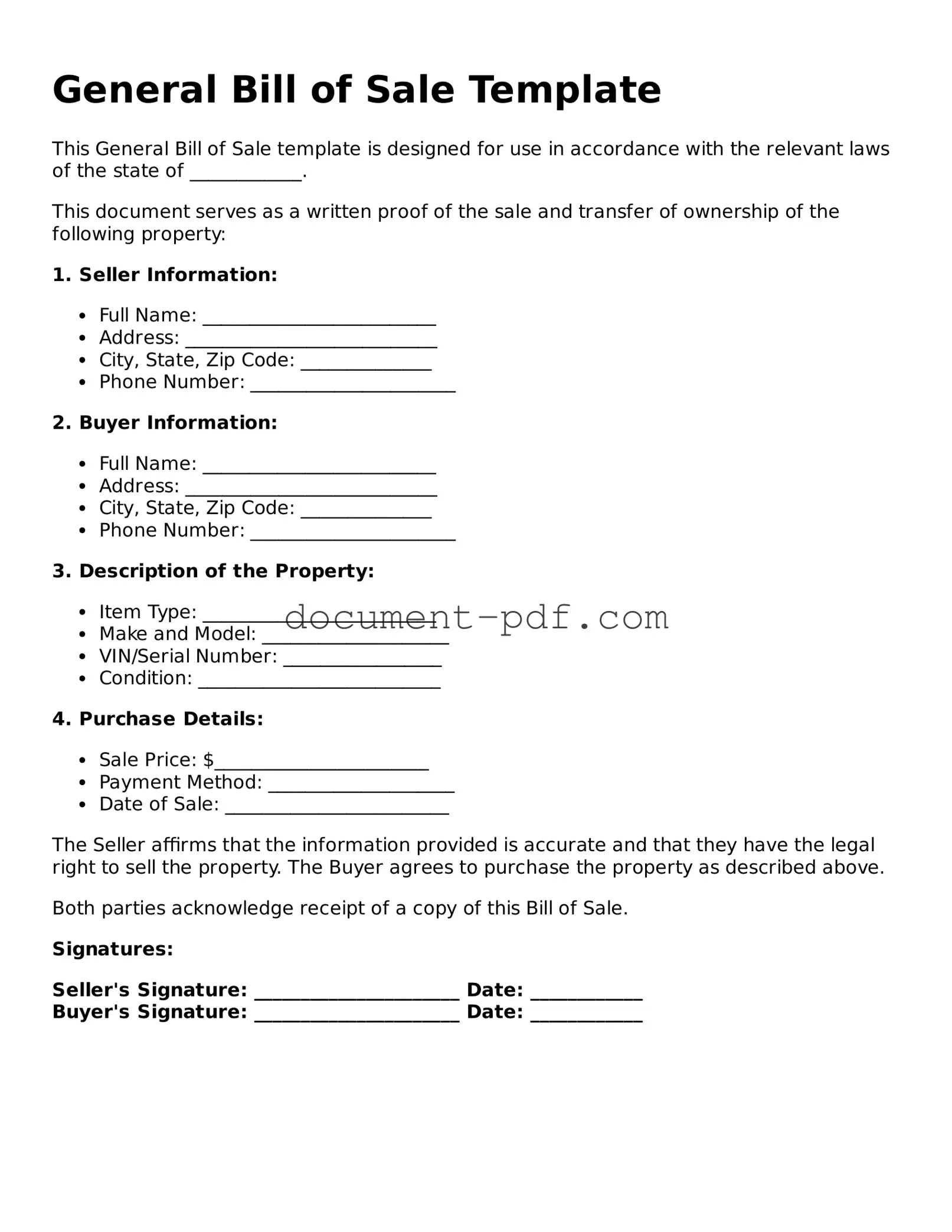The General Bill of Sale is often compared to a Vehicle Bill of Sale. This document specifically caters to the transfer of ownership for vehicles, including cars, motorcycles, and boats. Like the General Bill of Sale, it includes essential details such as the buyer's and seller's information, a description of the vehicle, and the sale price. Both documents serve to protect the interests of both parties by providing proof of the transaction and establishing clear ownership transfer, which is crucial for registration and future sales.
Another similar document is the Personal Property Bill of Sale. This form is used when selling personal items, ranging from electronics to furniture. It functions similarly to the General Bill of Sale by documenting the transaction and providing a record of the sale. Both documents include details about the items being sold, the sale price, and the identities of the buyer and seller. This ensures that both parties have a clear understanding of the terms of the sale and can refer back to the document if any disputes arise.
In any transaction involving the sale of personal property, it's essential to have proper documentation to ensure clarity and protect the interests of both parties involved. A well-crafted Bill of Sale not only confirms the transfer of ownership but also provides vital details such as the item description and sale price. For those seeking a comprehensive solution, referring to a Goods Transfer Receipt can simplify the process, ensuring that all necessary information is captured effectively and legally.
The Equipment Bill of Sale is yet another document that shares similarities with the General Bill of Sale. This form is specifically tailored for the sale of equipment, often used in business contexts. Like the General Bill of Sale, it outlines the specifics of the transaction, including the equipment's condition, serial numbers, and any warranties provided. Both documents serve to formalize the sale and protect the rights of both the buyer and seller, ensuring that the transaction is clear and legally binding.
Lastly, the Firearm Bill of Sale is a document that parallels the General Bill of Sale in terms of purpose and structure. This form is used for the sale of firearms and includes specific details regarding the weapon, such as make, model, and serial number. Like the General Bill of Sale, it requires the signatures of both the buyer and seller, providing a record of the transaction. This document is particularly important due to the legal regulations surrounding firearm sales, and it helps ensure that both parties comply with local laws while facilitating a smooth transfer of ownership.
